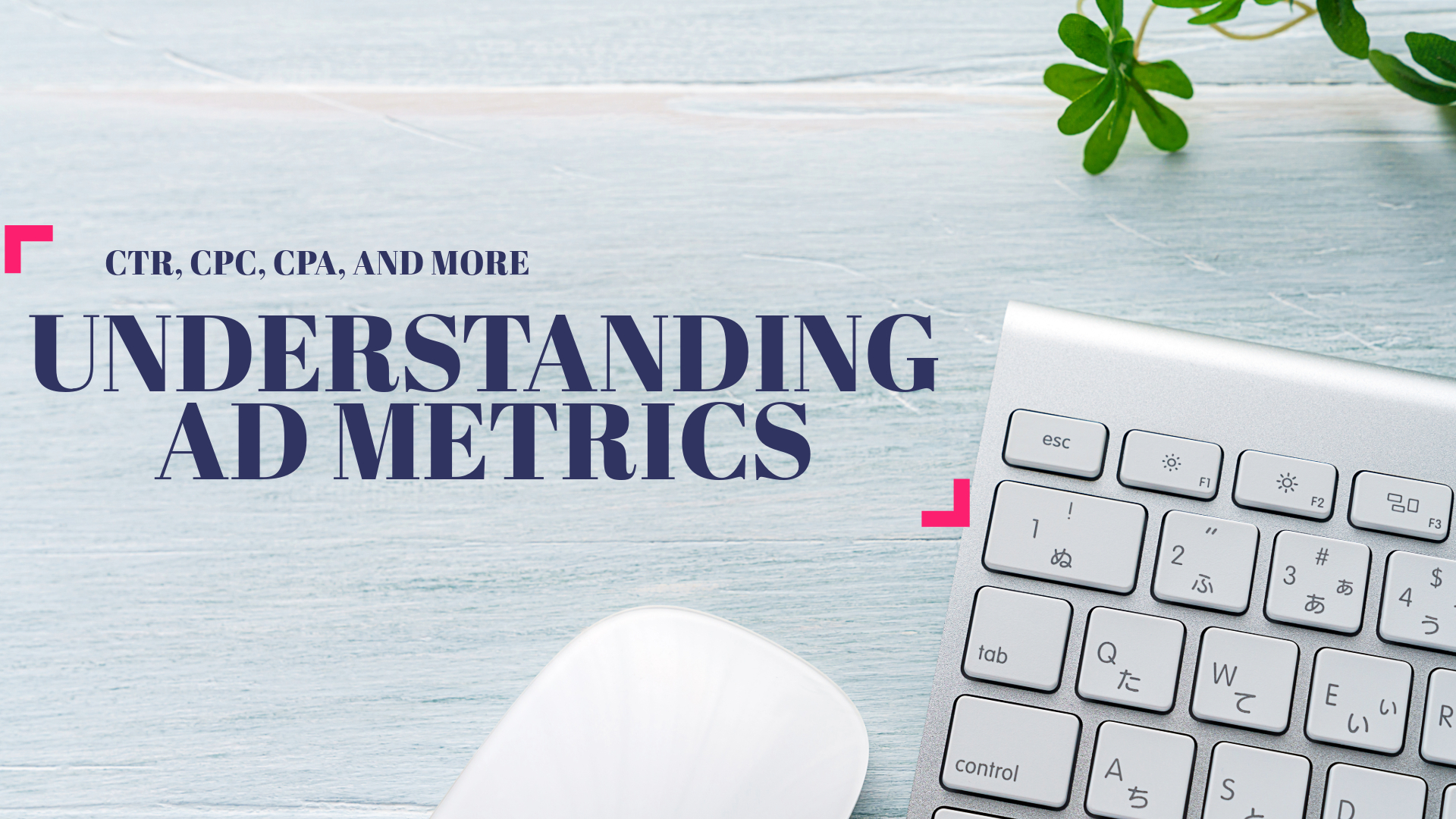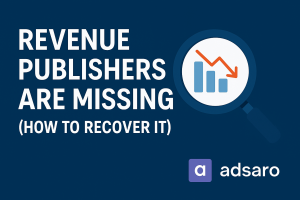Understanding Ad Metrics like CTR, CPC, CPA, and others is vital for achieving success in your traffic campaigns, especially when using a powerful platform like Adsaro. These metrics are not just numbers—they provide actionable insights that allow you to fine-tune your strategy, optimize your budget, and reach the right audience. By truly Understanding Ad Metrics on Adsaro, you can make informed decisions that drive more qualified traffic, improve engagement, and maximize your return on investment, ensuring every dollar spent is working toward your campaign goals. Some of the Ad Metrics are:
1. Click-Through Rate (CTR)
CTR (Click-Through Rate) is a key metric in digital advertising that measures the percentage of users who click on your ad after seeing it. It reflects how engaging and relevant your ad is to your audience. A high CTR indicates strong performance, while a low CTR suggests the need for optimization. Understanding Ad Metrics, like CTR, is essential for improving campaign effectiveness and maximizing ROI.
It is calculated as:

Importance:
Engagement Indicator: A higher CTR indicates that your ad is compelling and relevant to the audience.
Quality Score: On platforms like Google Ads, a higher CTR can improve your Quality Score, potentially lowering your costs and improving ad positioning.
Strategies to Improve CTR:
Craft Compelling Ad Copy: Use strong, clear, and engaging language.
Use High-Quality Images: For display ads, ensure your images are attractive and relevant.
Target the Right Audience: Ensure your ads are shown to people who are most likely to be interested in your offer.
2. Cost Per Click (CPC)
Understanding Ad Metrics like CPC (Cost Per Click) is crucial for evaluating the efficiency of your campaigns. By understanding CPC, you can optimize your budget, target the right audience, and ensure that each click generates meaningful results, making your ad spend more effective.
It is calculated as:

Importance:
Budget Management: CPC helps you understand how much you’re paying for each visitor to your website.
Campaign Efficiency: Lower CPC can mean more clicks for your budget, improving overall campaign performance.
Strategies to Optimize CPC:
Bid Strategically: Use automated bidding strategies offered by ad platforms to get the best results within your budget.
Improve Quality Score: Higher relevance and better ad quality can reduce your CPC.
Optimize Keywords: Use keyword research tools to find cost-effective keywords.
3. Cost Per Acquisition (CPA)
Understanding Ad Metrics like CPA (Cost Per Acquisition) is essential for evaluating the efficiency of your campaigns. CPA tracks the cost of acquiring a customer or completing an action, like a sale or sign-up. By understanding CPA, you can optimize your campaigns to drive high-quality conversions while keeping ad spend under control.
It is calculated as:

Importance:
ROI Measurement: CPA helps you determine how much you’re spending to acquire a customer, crucial for understanding the profitability of your campaigns.
Performance Evaluation: Lower CPA indicates a more efficient campaign in terms of converting visitors.
Strategies to Reduce CPA:
Refine Targeting: Ensure your ads reach the most relevant audience likely to convert.
Optimize Landing Pages: Make sure your landing pages are persuasive and user-friendly to increase conversion rates.
A/B Testing: Continuously test different ad creatives, offers, and landing pages to find the most effective combinations.
4. Impressions
An impression in digital advertising refers to the number of times an ad is displayed to a user, regardless of whether it’s clicked or not. It’s a key metric for measuring the visibility and reach of your ad campaign. While impressions don’t necessarily indicate engagement, they give you an understanding of how often your ad is being shown to your target audience. Monitoring impressions helps you assess your ad’s exposure and the potential for driving awareness among new users.
Importance:
Brand Awareness: Impressions help gauge the reach of your ad and how many people are seeing it.
Visibility: High impressions indicate good visibility, but it needs to be balanced with engagement metrics like CTR.
Strategies to Manage Impressions:
Ad Placement: Choose placements that maximize visibility to your target audience.
Frequency Capping: Limit the number of times your ads shown to the same user to avoid ad fatigue.
5. Conversion Rate
Conversion Rate is a key metric that measures the percentage of users who complete a desired action, like a purchase or sign-up, after interacting with your ad. A high conversion rate shows your campaign is effective, while a low one suggests room for improvement in messaging, targeting, or your landing page. Optimizing your conversion rate is essential to maximize campaign effectiveness and return on investment.
It is calculated as:

Importance:
Effectiveness Measurement: A higher conversion rate indicates that your ad and landing page are effective at persuading users to take action.
Optimization Insight: Helps identify areas for improvement in the customer journey.
Strategies to Improve Conversion Rate:
Optimize Ad Copy and Design: Ensure your ad clearly communicates the value proposition.
Improve Landing Page: Ensure consistency between the ad and landing page, and make the conversion process as simple as possible.
Targeted Offers: Tailor offers to the specific needs and interests of your audience.
6. Return on Ad Spend (ROAS)
ROAS (Return on Ad Spend) is a key metric that measures the revenue generated for every dollar spent on ads. It helps evaluate the profitability and effectiveness of your campaigns. A high ROAS shows strong returns, while a low ROAS signals the need for optimization. By tracking ROAS, you can make data-driven decisions to fine-tune your budget, targeting, and strategy, ensuring maximum value from your ad spend.
It is calculated as:

Importance:
Profitability Measurement: Indicates the efficiency and profitability of your ad campaigns.
Financial Performance: Helps in budget allocation by identifying high-performing campaigns.
Strategies to Increase ROAS:
Target High-Value Customers: Focus on audiences with higher lifetime value.
Optimize Campaigns Continuously: Regularly review and adjust campaigns to ensure maximum efficiency.
Leverage Retargeting: Use retargeting to convert previous visitors who have shown interest.
Conclusion
Understanding and effectively managing these key ad metrics—CTR, CPC, CPA, Impressions, Conversion Rate, and ROAS—are essential for the success of any digital marketing campaign. By regularly analyzing these metrics, marketers can make informed decisions, optimize their strategies, and ultimately drive better performance and higher ROI.








Leave a Reply